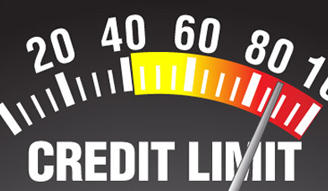Concept on Credit Card Limit:
Credit cards include credit card limit, or maximums, that determine how much a cardholder can spend before having to settle the card’s balance. According to Experian, the average credit limit for Americans in 2020 across all credit cards will be $30,365. Individual credit card limit, on the other hand, can be as low as $300, depending on the age, work situation, and credit history of the user.
What Is a Credit Card Limit?
A credit card limit refers to the maximum amount that a cardholder can spend on a credit card. It effectively functions as a maximum loan amount that the cardholder must repay (usually every month) before being permitted to spend more money. The larger the credit limit, the more money a borrower can spend on a credit card.

If a cardholder tries to charge purchases using a credit card that exceeds the cardholder’s maximum credit limit, the card may be denied at the time of purchase or a penalty fee may be levied. It’s advisable to pay off any credit card balances by the end of each monthly payment cycle to avoid this. Most credit card companies will impose interest if you don’t pay on time (known as the Annual Percentage Rate, or APR). Interest on outstanding amounts is applied to the credit limit, resulting in less accessible credit and a higher credit usage rate (CUR).
How Credit Card Limit is Decided?
A credit card issuer will consider a number of variables when determining a cardholder’s credit limit. This usually happens when someone applies for the first time for a credit card with that particular provider. Following the issuing of the certificate, annual evaluations may be conducted. The following are some of the factors that card issuers assess.
Employment Status and Annual Salary
Issuers of credit cards frequently inquire about applicants’ employment status and annual salary. This assists them in determining how much money applicants have available to make timely payments.
Monthly Rent or Other Bills
Card issuers may inquire about the applicant’s monthly housing bills (rent, mortgage payments, and so on), as well as any loans or utility payments. This is used to assess a candidate’s financial condition in a broad sense.
Utilization of Credit
The percentage of available credit used by a cardholder across all accounts is referred to as credit usage. To maintain a decent credit score, we recommend maintaining credit utilisation below 30%. Credit card limits can be increased by lowering credit use.
History of Credit
When determining how much a credit limit should be, a credit card issuer will always look at an applicant’s credit history. This is why, when applying for their first credit cards, younger candidates (such as college students) are given lesser credit limits. A lender sees a shorter credit history as less of an assurance that the applicant will be able to repay the debt.
Click here to check out Credit Calculators.
Low vs. High Credit Limits
Credit limits are frequently lower for younger cardholders with a short credit history. Their credit limit will increase as their credit history improves (provided they make on-time payments and pay off their debt).
Low credit limits make making major purchases with a credit card slightly riskier than for those with a greater limit. It’s advisable to maintain credit utilisation below 30% as a general rule of thumb.
If a cardholder’s combined credit limit is only $1,000, any purchase over $300 will result in a credit utilisation rate that is higher than advised. The cardholder’s credit score may suffer as a result of this over time.
Higher credit limits allow cardholders to make substantial purchases without worrying about exceeding their maximum credit utilisation recommendation. When a cardholder makes a major financial choice, like as applying for a car loan or a mortgage, it also sends a good signal to other lenders.

How to Raise Your Credit Card Limit
A credit card company will ask a cardholder to update their work information on a regular basis (this may occur annually). This is necessary since bigger credit limits are available when your employment status and earnings rises. Credit scores that improve over time may lead to an increase in a cardholder’s credit limit from the issuer. These are some of the simplest and least expensive methods for raising a credit limit.
If a cardholder chooses to request a higher credit limit in advance, they can occasionally do so online. However, calling the number on the back of the card to talk with a representative over the phone is typically the best option. This is especially important if the cardholder is unsure whether or not they will be authorised based on their personal financial circumstances.
If the cardholders’ purpose is to minimise their credit utilisation while paying down their account amount or other accumulated debt, requesting a credit limit increase may be successful. If the purpose is to simply have more money to spend without a strong strategy to pay it all back, it’s not a good idea to apply for a limit increase. Instead of requesting for more credit, the cardholder should endeavour to pay down their balance on the card.
Bottom Line
As they begin their credit journey, younger, college-aged cardholders may have smaller credit limits. As a cardholder’s wage rises and their credit scores improve, credit card limits can rise practically automatically. Higher credit limits are beneficial for making major expenditures with a credit card and can signal to lenders that you are serious about other financial goals. So asking a credit card issuer to increase a card’s credit limit is a good idea as long as there’s a solid plan to pay down debt and reduce credit utilization.
Source: https://www.forbes.com/advisor/credit-cards/average-credit-card-limit/
For more info, visit here: credit calculator







